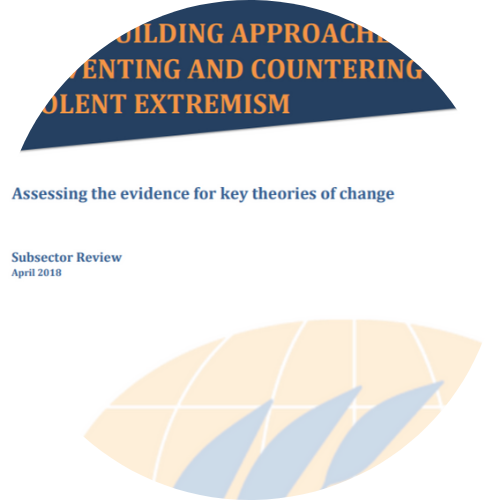Peacebuilding Approaches to Preventing and Countering Violent Extremism
Authors: Elizabeth Hume & Emily Myers
Publisher: Alliance for Peacebuilding
Publication date: April 2018
Abstract: Violent extremism (VE) is one of the most significant security challenges facing the global community. In 2016, 77 countries saw at least one terrorism related death, more than at any other time in the last 17 years.
The threat and impact of violent extremism are palpably real, but consensus around how to define, discuss, and respond to violent extremism remains nebulous. Over the last decade, the peacebuilding field has deepened its understanding of the drivers of VE. Research has shown that grievances linked to state and security force abuses, perceptions of marginalization and injustice, relative economic and social depravation, and desire for justice and purpose most consistently underpin mobilization to extremist violence. However, aggregated evidence of what has worked to address these drivers has yet to emerge, hindering our ability to articulate cohesive programmatic and policy responses to VE.
The Alliance for Peacebuilding (AfP) theorizes that if we conduct research on existing P/CVE approaches, we can build the evidence base for both CVE and broader violence reduction work and help parse out the differences between P/CVE and other violence reduction programming.
Contents:
1 Contents 3
2 Methodology and included cases 4
3 What should we call it? The terminology debate 4
4 Evaluative Implications of Peacebuilding Approaches to P/CVE 6
5 Theories of Change 7
Approach #1: Altering the Behavior of Individuals Deemed at-risk of Engaging
in Violence 9
Approach #2: Increasing Community Capacity to Resist and Mitigate Violence 10
6 Conclusions and Recommendations 11
7 Annex 1: Included Cases (sorted alphabetically by location) 13
About the Authors:
Elizabeth Hume is the Senior Director for Programming at Alliance for Peacebuilding.
Emily Myers is a Scoville Fellow 2017 at the Alliance for Peacebuilding.

